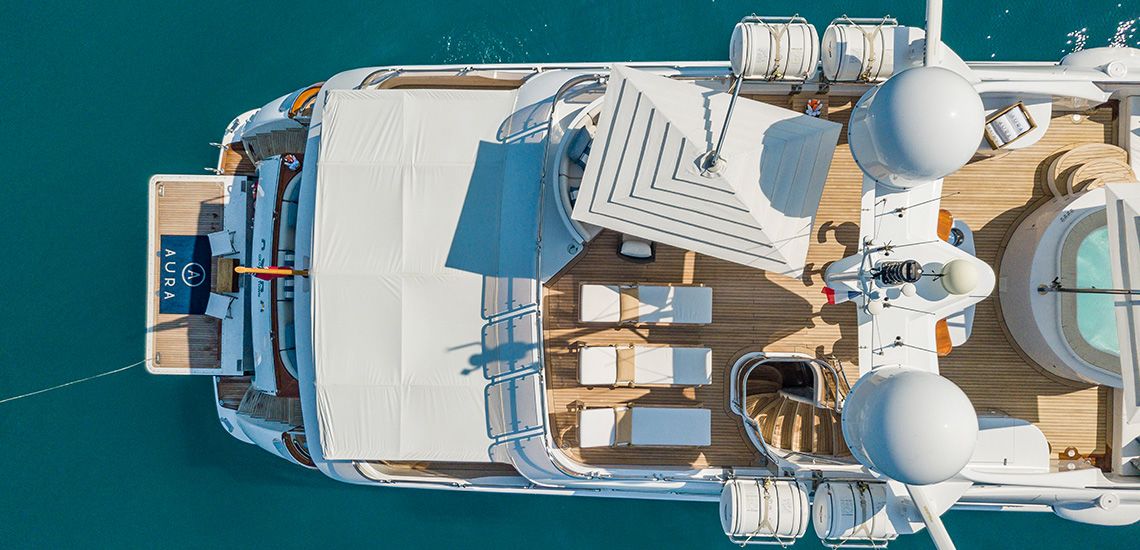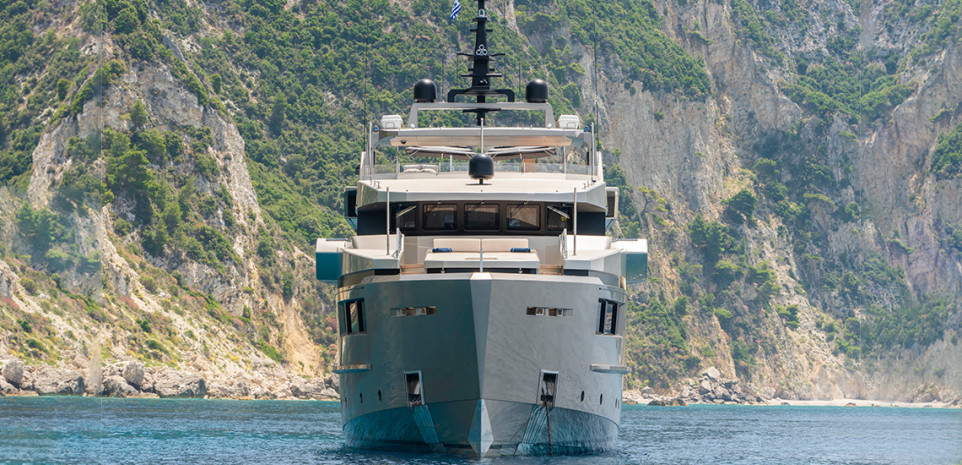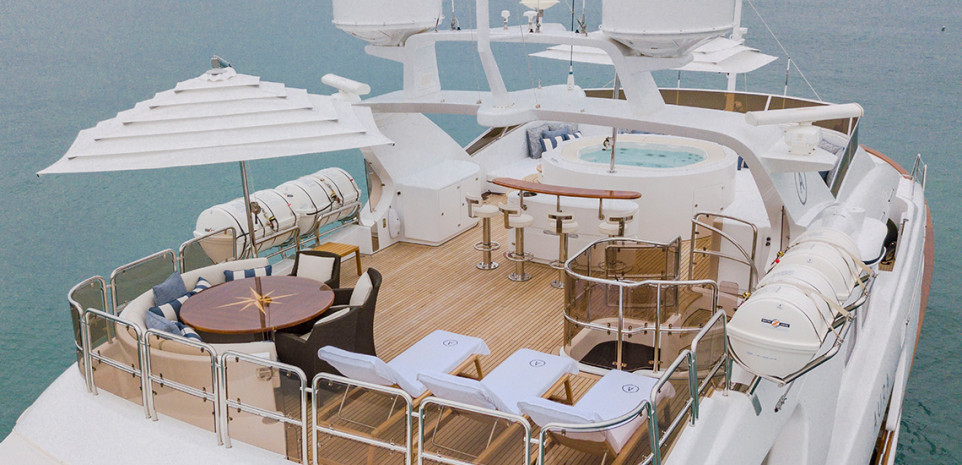
Are you starting a yachting career but not from a boating background? Then, it’s time to get across the superyacht jargon to feel well-versed on your first boat or day working experience. Here’s a glossary of terms about your new workplace.

Bow: Front of the boat. (Pointy end.)
Stern: Back of the boat. (Blunt bit.)
Foredeck. Forward deck.
Aft deck: Rear deck.
Midships: The halfway point between bow and stern. Also, amidships.
Port: Left-hand side of the boat (when facing the bow).
Starboard: Right-hand side of the boat (when facing the bow).
Quarter: A yacht can be divided into quarters, and this can help a captain direct their crew where to go on deck. Port Bow and Starboard Bow cover the two areas from midships up to the bow. Port Quarter and Starboard Quarter cover the areas running aft from midships to the stern.
Beam: Width of the yacht at its widest point.
Draft/draught: Depth of the yacht under the waterline.
Hull: The ’base’ of the boat. Everything from the main decking down.
Superstructure: Everything built on top of the hull. (Upper decks)
Bridge/Wheelhouse: Where the captain drives the boat. An interior space on an upper deck with good visibility across the front of the yacht to sea.
Flybridge: A secondary exterior helm station where the captain drives the boat from the yacht’s top deck. The flybridge is outdoors and offers almost 360-degree visibility.
Cockpit: An area on deck where the captain drives the boat (sailboat). Also, often a seating/dining area.
Helm: The yacht wheel and steering system. One can ’stand at the helm’, ’go to the helm’ or even ’helm the boat’.
Galley: Where the magic happens. (Never call it a kitchen!)
Forepeak: A compartment/large locker or cabin located up in the nose of the boat, under the foredeck. On small sailing boats, the crew may live in the forepeak cabin.
Swim platform: A platform at the back of the boat, off the aft deck, for swimming and launching the water toys.
Transom: The vertical span across the stern where the boat’s name is written.
Passerelle: The gangplank! There’s nothing like walking across a superyacht passerelle for the first time. (Remember, never step on the passerelle with your shoes on).
Lazarette: Storage in the boat’s stern, under the aft deck area, is generally where the water toys are stored.
Main Salon: The formal lounge space on the main deck. Adjoins typically the formal dining room, often as an open-plan space.
Sky Lounge: Upper salon. A comfortable lounge space, generally with a large-screen TV, card/occasional tables and possibly a piano.
Sundeck: Top deck of a motor yacht, where you’ll find sunbeds, BBQ, a bar, a dining table, and a Jacuzzi.
Stateroom: Cabin. Across the industry, superyacht cabins are increasingly called staterooms or suites on larger yachts. However, in practice, crew generally continue to call them cabins —or they cut off the word altogether, instead saying ’clean the master/VIP/starboard forward’ etc.
Head and Day head: In sailor-speak, a ’head’ is a boat toilet. On superyachts, it’s relatively uncommon to call a bathroom a head, except in one crucial leftover case: the day head. This small toilet/washroom is one that guests will use when they want to avoid going back to their cabin to use the bathroom. On superyachts, they are located on the main and upper decks and occasionally on the sundeck.
Note that you’ll still hear some crew say, ’I’m going to use the head’ instead of ’I’m going to the toilet/bathroom’ because the word ’head’ is much more common on sailboats than motor yachts.

Bow Line/Aft Line: The rope tied from the bow/aft to the dock stops the vessel from moving when in its berth.
Spring Line: A line tied diagonally from the bow or stern to a point on the dock to stop the yacht from moving forwards or backwards.
Cleat: A piece of stainless steel fixed to the deck or capping rails that lines are tied to.
Bulwark: The sides of a motor yacht that rise up from the deck. (The outside bit that stops you from falling off).
Capping rail: The rail on top of the bulwark, which is usually varnished to a high gloss.
Fender: The strong rubber ’balloons’ suspended over the sides of the yacht to protect the paintwork when the yacht is docked or manoeuvring in or out of berths.
Stabiliser: Underwater systems to reduce the yacht rolling at sea. Zero-speed stabilisers are stabilisers that work both at anchor and underway.
Tender: A small boat used to ferry guests ashore, get supplies, take rubbish in etc. There’s a vast range of tenders, including high-speed and limousine tenders, which are covered tenders that protect the guests from wind and sea spray.
Rescue tender: A rescue tender is a tender over 3.8m that is classed as one of the yacht’s vessels for rescue operations under SOLAS guidelines. It has certain safety specifications but can also be used for everyday boat operations, just like a standard tender, so you’ll often hear the captain say, ’Take the rescue tender’.

An APA is a sum, usually 25-35% of the charter fee, that the charterer will pay in advance so that the yacht crew can stock the yacht with food, drink, and fuel and have money in the kitty for things like berthing fees. Any unused money at the end of the trip is returned to the charterer.
Bimini: A shade awning.
Bulkheads: The yacht’s internal walls and watertight compartments.
Ensign: The yacht’s flag, indicating which country it is registered in. Note that yachts are only sometimes registered in the nationality of the people that own them. And also that a yacht is legally considered a tiny, floating part of the country whose flag it flies and therefore operates under its laws and jurisdiction.
Knot: A measure of speed used on boats equal to one nautical mile (1.8km/hr).
Nautical Mile: Different from land miles! A nautical mile (1852m) is longer than a land mile (1609m).
Preference sheet: The form a charterer fills out to inform the yacht’s crew of their preferences regarding food, drink, activities etc. This preference sheet is given to the senior crew before the charter so the captain, chef, and chief stew can prepare the yacht for the charter.
Pullman: A pull-down berth to add an extra bed. These pull-down wall-mounted bunks are usually found in twin cabins for a third bed.
Phew! See? You’re already an expert :)